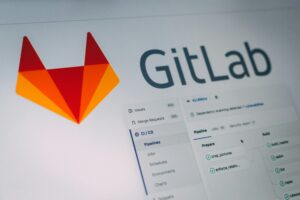Ah, the grand odyssey of technology, where ill-tempered legacy systems reside as antiquated giants amidst a bustling digital landscape filled with modern marvels! Herein lies the perplexing realm of software integration challenges, those insidious gremlins that gatecrash the harmony of interconnected systems and rattle the very foundations of our digital dreams. With a cacophony of APIs clamoring to communicate in a dialect fraught with incompatibilities, organizations often find themselves entangled in a chaotic ballet of versions, updates, and well-intentioned yet dysfunctional modules. Yes, my curious compatriots of the tech revolution, gather ’round, for we embark on an exploration of this labyrinthine universe!
Now, imagine for just a moment—no, visualize vividly!—a grand tapestry woven from threads of innovation and legacy. Each module, a vibrant color reflecting the diversity of systems, struggles against the silent tide of stagnation, yearning for an elegant interweaving that seems, at times, utterly out of reach. For as progress forges ahead—triumphant in its pursuit of seamless integration—the shadows of past architectures loom large, casting a pall over even the most nimble of efforts. Serious challenges of compatibility, where APIs twist into sinister shapes and variables collide with a dissonance that would make a seasoned composer weep, present themselves at every turn, leaving tech-savvy trailblazers grasping for solutions like intrepid explorers lost in the digital jungle.
The Terrifying Dance of Software Integration Challenges
Ah, dear readers! Imagine a vast ball, adorned in glittering lights and tangled wires, where assorted Modules sway and swirl – some in harmonious rhythm, others tripping over mismatches like awkward wallflowers. Here we unveil the spectacle of software integration challenges, a magnificent performance replete with bright hopes and dire missteps.
Now, let’s take a moment, shall we? Picture your network, not merely a collection of data highways strewn across a valley of code, but rather a living, breathing entity, pulsing with information, like a booming heart of an iridescent dragon. Yet, within this throbbing organism lie perilous latency issues lurking like gremlins in the dark – you know them well! Those pesky delays that transform real-time communication into a sipping tea affair, where seconds stretch into eternities.
The Unraveling Web of Mismatches

Now, my curious comrades, behold how these software integration challenges often emerge from mismatches of the most mysterious kind. They sneak in stealthily, donning disguises that blend harmoniously into the scenery of perfect integration plans. Modules designed to be symbiotic inadvertently develop divergent traits, like siblings raised in different galaxies. One unyielding Module, bathed in the glow of outdated protocols, argues with another basking in the glory of innovative API languages – oh the drama!
These mismatched Modules can wreak absolute havoc. Take our dear friend, the Authentication Module. How dare it insist on validating a user with archaic techniques while the Authorization Module champions the latest OAuth 2.0 standards? Chaos ensues! Error messages sprout like weeds in a garden that was meant to be a serene oasis of cooperation. “403 Forbidden!” rings through the air, a death knell signaling the collapse of productive interaction, leaving developers and users to navigate a nightmarish maze of unresolved queries.
And here lies the crux, my confounded compatriots: It’s the communication gaps between these disparate Modules that sow the discord, sprouting out like wild vines. Debugging tools become our trusty shears, and oh, what a prickly endeavor it is! Be it REST or SOAP, XML or JSON, we stand there, prying apart modules that were meant to sing in unison. A gentle nudge here, a forceful yank there, until the weeds of mismatch are tamed, restored to a semblance of coherence.
The Specter of Latency
And yet, even as the mismatches transform under our diligent labor, lurking in the shadows is the specter of latency, that insidious beast which tests our sanity and patience! We strive for integration, for seamless connectivity among Modules radiating with synergy! But alas! The fiendish specter awaits its moment of glory, drawing out every request into a protracted battle, leaving our end-users frothing at the mouth for timely responses. Oh, how we loathe those milliseconds that stretch into infinity!
Weaving through the twists and turns of this gothic horror story lies the unmistakable truth: the gravity of network conditions. A fragmented network can turn mere interactions into a sluggish parade, each Module dragging its weary feet as packets float aimlessly through the ether. How we wish for a magical incantation that could whisk away all latency issues as if they were nothing more than pesky flies buzzing around our ears!
But wait, good folks! Solutions abound in our arsenal! Let’s divine a robust architecture, shall we? Deploying caching strategies becomes akin to orchestrating an avant-garde symphony! As we summon the spirits of CDN (Content Delivery Networks), we bind our Modules together in a joyful balletic pirouette. What a thrilling scene, as the dance regenerates each time a request is executed!
Authentication: The Shield Bearer
But just when you think you may breach the castle of integration, don’t forget our valiant shield-bearer—the Authentication Module! Oh, what a slippery slope it traverses! Battling breaches and external threats, it guards the gates with a fierceness unparalleled. Yet it too, dare I say, has its own baggage. Version mismatches come back to haunt the integration dance, as different components struggle to align their security postures—humph! We’re left to wonder: Does your Module speak OAuth fluently, or is it a blithering toddler in the realm of secure communication?
There’s a moment, a quantum leap if you will, when unlocking the Authentication Module’s potential is akin to striking the sacred tuning fork atop a mountain peak. With the right Protocol in hand, we can harmonize communication, enabling Modules to bow gracefully before the triumvirate of security, speed, and user experience.
Navigating the Final Terrain: Conquering Software Integration Challenges

As we draw the curtains on this exploration into the realm of software integration challenges, an undeniable truth stands tall: the landscape of software solutions is, indeed, a sprawling labyrinth embellished with diverse data formats that beckon for seamless conversion. The labyrinthine pathways often become fraught with obstacles, making the integration process feel like a Herculean task. Yet, within this complexity, the potential for elegant solutions flourishes, a testament to human ingenuity when faced with intricate protocols and the demanding nuances of translation.
The Undeniable Role of Modules
At the heart of overcoming software integration challenges lies the concept of ‘Modules.’ These modular components, designed purposefully to interact harmoniously within a larger ecosystem, serve as the bedrock upon which effective integration can thrive. Imagine them as the building blocks of a vast architectural wonder; each module plays a distinct yet interconnected role, lending itself to the creation of a cohesive structure—much like individual fingers of a hand working together to grasp and manipulate.
Modules become not mere tools, but guardians of interoperability, their designs reflecting careful consideration of the diverse data formats, protocols, and conversion requirements that punctuate the integration landscape. As organizations embark upon their integration journeys, a thoughtful selection of these modules can mitigate many pitfalls that accompany software integration challenges. The importance of standardization in data formats cannot be overstated; without such initiatives, chaos reigns, rendering the pursuit of seamless connections a quagmire of frustration and inefficiency.
Illuminating the Path Ahead
The integration realm can resemble a jigsaw puzzle of different formats and communication styles, wherein each piece must be painstakingly manipulated to fit into a greater whole. In this context, the translation of data stands as both an art and a science; the practitioner’s attention to detail can often mean the difference between success and the abyss of integration failure. As disparate systems converse in their respective languages, a translator—often a meticulously crafted module—becomes pivotal to ensure that intentions are not lost in the cacophony.
Moreover, it is vital to recognize how the evolution of technology perpetuates new software integration challenges. As time marches onward, legacy systems fraught with outdated protocols find themselves entwined with cutting-edge innovations that unveil unforeseen complexities. Navigating such waters demands an adaptive strategy—agility in the face of change becomes a prized virtue. Flexibility and continuously learning mechanisms, employing feedback loops to assess performance metrics, elevate integration endeavors from mere functionality to elegant orchestration.
Reflecting on the influence of methodologies such as Agile or DevOps, it is clear that integration challenges are best met with a collaborative approach. By merging the worlds of development and operations, these methodologies create a fertile ground for modules to flourish. Ideas germinate across team boundaries, allowing diverse perspectives to illuminate the integration path, unveiling novel solutions previously obscured by narrow lenses or siloed thinking.
The Interconnected Symphony of Systems
In juxtaposition to isolated efforts, cohesively orchestrated collaboration manifests as the symphony of integration. It calls for a medley of protocols and formats, harmonizing disparate systems into a cohesive sonority that sings the praises of efficiency and resilience. Every module plays its note, each contributing to a complex score that envelops end-users in a seamless experience.
A true mastery over software integration challenges elevates organizations to the status of finely tuned orchestras, wherein not a single note feels out of place. A diligent focus on robust integration strategies opens the doors wide to competitive advantages, as data flows effortlessly across systems, insights blossom from merged information, and operational silos disintegrate like shadows under a blazing sun. The result? An organizational ecosystem primed for proactive adaptability in the quintessentially agile business world.
Final Reflections: Futures Beckoning
In summation, while the path winding through software integration challenges may initially appear treacherous, the destination emerging from successful navigation glimmers with promise. The marriage of thoughtful module selection and a commitment to collaborative methodologies paves the way for a future where disparate systems are no longer seen as barriers but as complementary elements engaged in a grand dance of data, protocols, and integration triumphs.
Remaining ever vigilant, organizations must embrace the dynamic nature of technology, understanding that the key to overcoming challenges lies in adaptability and deliberate synergy across all modules involved. Just as languages evolve, so too must our approach to software integration challenges. In that evolution lies the ultimate victory, a resolution that nods knowingly to the complexity of its forebears, now transformed into a harmonious, efficient tapestry of interconnected systems.




Leave a Reply